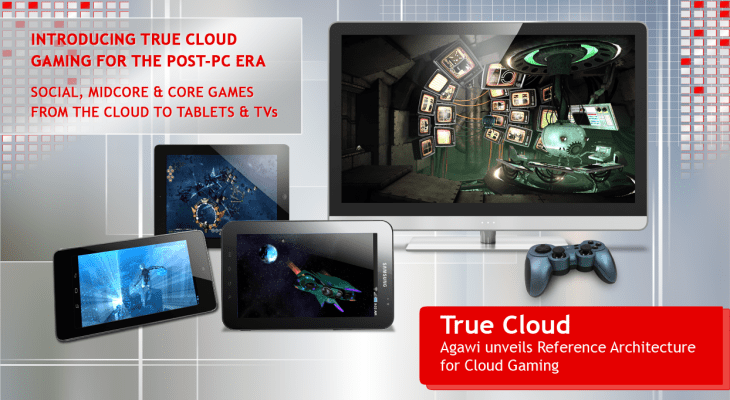Game streaming might be a common feature of ISP packages for bundled Internet, if Agawi has anything to say about it. The cloud gaming startup has outlasted rival OnLive, which still exists in name after a nasty bankruptcy, and Gaikai, which was picked up by Sony to power its upcoming PS4 cloud-based features, and now it wants to give ISPs and carrier networks a chance to regain their place as providers of content.
Internet providers have been demoted to dumb tubes with the advent of services like Netflix, iTunes, Spotify and others, which is not where they want to be. Serving up piping hot content to customers is the way to own a more complete relationship, one that’s likely to result in longer-term commitment and deeper revenue pockets. If you control both the channel and what’s on it, you’re winning both ways, after all. Agawi, which has spent the past few years building its cloud gaming infrastructure, is now pursuing its plans of making that tech, code named VG36, commercially available to ISPs, with a ready-to-roll white label solution they can pass on to their customers.
Agawi is partnering with NVIDIA to make this happen, after the two worked together on building their “True Cloud” gaming architecture in February. The combination of Agawi’s existing tech with servers based on Nvidia’s Grid processors is designed to help stream multiple games at the same time from a single server, thereby bypassing or at least minimizing the upfront equipment costs that proved extremely troublesome to OnLive.
I spoke to Agawi executive chairman Peter Relan about the launch of the new platform, which will be opening up to general availability in July. It’s being announced now because of the long lead times a lot of Agawi’s target customers have when implementing services like this one, Relan said. The point is to make potential partners aware that Agawi is ready do deploy this tech as soon as the second half of this year, with data center partners lined up around the globe.
“Everybody has been waiting for MNVOs, MSOs, the telecom guys, the cable guys, to bring new services to market,” he said. “They offer voice, they offer Internet, they offer television, so what’s the next big content area? Gaming. Almost all the major telecom operators and cable operators want to do trials this year with introducing gaming services, and the easiest way to bring them to market is through cloud gaming, because the alternative is to put the equivalent of an iPad inside their set-top box.”
Once Agawi begins deployments in earnest, any service provider that participates should be able to offer games direct to existing subscribers through the hardware they already have it – be it computers, mobile devices or even connected TVs. Relan says it can also help with licensing of specific content, and will offer three tiers (casual, mid-core and AAA) to appeal to all types of gamers.
Targeting the folks who manage the pipes is a good strategy for Agawi, not only because providers are looking around for content opportunities, but because cloud gaming has the potential to be very bandwidth-intensive for consumers. If carriers are providing the service, however, they can presumably also offer some way of making sure that bandwidth used to stream games doesn’t count across their monthly totals, the way Comcast’s video service doesn’t count against its caps. Whatever the arrangement between providers and clients ends up being, Agawi still has to sell its offering to telcos and ISPs first.
